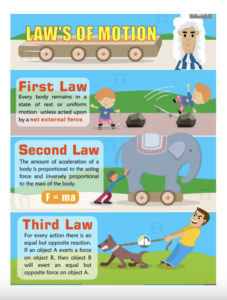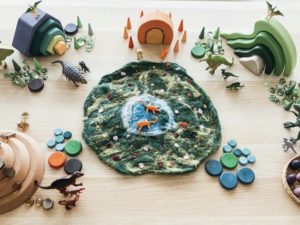Month: November 2020
Hello Pod#4!
Well done on your Interactive learning Design on Art of Expression! I love your activity ideas, website layout, the simplicity, and click buttons(hyperlinks)that take me to certain pages without me having to scroll all the way up, look for what I need, then move on to next.
Following are some more of my detailed comments on your ILD! 🙂
Comment on your Activities:
I think your descriptions and rationales were well written and easy to follow. Your activities were very well organized and engaging too! I like how you mentioned how colour wheels can also be used by children with colour blindness. Even if they can’t see colours well, they can still see them in grayscale and recognize how each colour relates to others! I also liked the part where you included teamwork exercise and individual exercise especially because this allows the learning resource to be a hybrid of in-person and online! It allows us to educate ourselves through times like now where we have to limit interactions with others. Lot’s of variation!
Comment on your Assessment Plan:
I really like how you laid out your assessment plan page. Not only your group included the chart on National Core Arts Standards, but you also added short descriptions on what each section overall means. To be honest, I didn’t quite understand what the chart was trying to say until I read the short description underneath. Those descriptions gave me a really good understanding on what your group is trying to do!
Comment on your Technology page:
I think the Technology page is also very well written. I like how your learning resources provide two ways to do your activity – both in person and online. You mentioned in your resources too, but in person/hands-on activities are crucial especially when teaching art. Considering the trendy matter “Covid19”, some may say, “Well, that’s for when things are back to ‘normal'”. However, your group did not fail to provide a solution to this. You suggested ways to conduct activities virtually that are as effective as doing it in person. Nice job!
Comment on your Inclusion page:
Good idea on having the definition for “Inclusive Design” at the very beginning! I think it helps the readers get their focus back straight especially after going through different pages on the website until they get here. This page introduces ways to include people who are colour blind and deaf, along with the challenges they have. I think the hyperlink to “usabilla” is really helpful because it gave me an idea of what it’s like to not be able to see certain colours. I think having an idea vs having no idea on what it’s like to have those challenges make a huge difference when sharing art or working together to create art.
One tiny thing about this section – I am also not a native English speaker, so correct me if I am interpreting this incorrectly, but I was slightly confused by what you meat on this specific sentence “Here is an even worst example that people are blind but still can create art base on multi-sensory development learning.” Did you mean “Here is a better example….?” or did you mean something else?
Also this is a suggestion, but since your group found a really cool site and video on a girl who creates art by feeling things through her body, maybe have the hyperlink to the video on “‘Here‘ is another example…” instead of hyperlinking it on to the title, “Loss Hearing”. I think that will catch more attention, because I almost missed this website page if I didn’t bring my cursor onto the title!
One last thing, about the overall format about your website – I think if you move the tab (on top of your website) “Descriptions & Rationals” after “overview”, but before “Modules”, I think the viewer will be able to follow your website even better, because Description & Rationals contains information that give better understanding on why your modules/lessons are planned the way they are planned! 🙂
Nice work Pod #4!
What experiences have you had with interactivity in learning environment? How did the interaction (or lack of interaction) affect your learning? Your enjoyment?
Hi everyone!
This is a very interesting topic! I think there are many different ways to “interact” while learning. It could be a physical thing like human interactions or interaction with objects. It could also be an emotional interaction where you feel something and it just stays with you because it was such a memorable experience. It could be a combination of both or with some other factors.
I genuinely enjoy interactions with other people, objects, and resources while learning new things, but I also value my own time (alone time) where I can let those new ideas to sink in, giving me an opportunity to reflect, and finalize my learning. The solo reflection part has been crucial for me, and I think this reflection part is what leads to next whether that be going further into that topic, or connect to something very different.
As an ESL student, interactivity is and has been a very important aspect in learning. Discussion with my peers and doing activities together simply helped me scaffold my understanding on what we were learning. When learning only happens in a one way direction (student just taking in information ) and interactivity is eliminated, it is very easy for me to get lost and get stuck in that mud of confusion.
For me personally, revisiting the topic that I was learning in different ways were one of the most effective ways to own that learning. I have a short story that I’d like to share that may or may not sound kind of nerdy, but here it is.
I was a high school student in Japan, and one day I was on a bus, standing, to go to school. The bus had to make a sudden stop mid way, and everyone on the bus, especially those who were standing lost balance and fell forward. Few days after that incident, I was in my physics class and we were learning about Newton’s law of motion. Newton’s first law of motion: “Every body remains in a state of rest or uniform motion unless acted upon by a net external force”.

As soon as I heard this and visualized it in my head, I remembered about the incident on the bus from few days ago. I connected so well to this portion of the lecture especially because I experienced it with my own body and it just made sense. This may sound very dramatic but I even felt like I owned Newton’s laws of motion because I never experienced that sense of “understanding” something this clearly, especially with physics. This is just one example of my experience with interactivity.
This may not be for everyone but I think learning experience that connects mind and body, stays longer in general. This experience is from when I was in high school but I still remember it clearly! Ever since this day, I process new materials that I learn by making personal connections or by creating a whole new experience around it to make it memorable.
Reference:
González, D., & Daennagonzalez. (n.d.). Newton’s Laws of Motion. Retrieved November 02, 2020, from https://issuu.com/daennagonzalez/docs/newton___s_laws_of_motion

Sunset from Mt.Tolmie – Anna Kato
Hi everyone!
It is crazy that we are already half way through the semester, and that we are also almost hitting the end of the year! Honestly, what a year.
Anyways, lets’s look at the topic for Blog Post #3.
“How will your interactive learning resource specifically ensure that the needs of all learners can be met?”
First of all, let me briefly explain what our group is working on.
We are using Inquiry based approach for our interactive learning resource. Our topic is D i n o s a u r s🦖, and we are targeting grade 1 students.
Subtopics we are covering are as follows:
- History and Origin of dinosaurs
- Types of dinosaurs
- Extinction
- Dinosaurs and Environment
Inquiry based learning is co-planned by teacher and students. Teacher and students communicate throughout the unit so that they can modify lessons (if necessary) depending on what and how students want to learn about the suggested topics.
Inquiry based approach gives many options for students to explore, deepen their understandings, present, and share and show their learning. Using this approach, learning becomes more visible.
Students will be an expert in their area of focus and will be able to gain ownership of their learning. For those who are not familiar with Inquiry based approach, please check my previous blog or Candice’s post for these might give you a better understanding on what my group is trying to do!
Everyone learn differently and present their learning different. Some like to take time, some are visual learners, some are very good with technology, some are very good at writing, etc… So, in our interactive learning resource, options are given to students on how they’d like to learn on the topic that we are focusing, and how they’d like to present and share their learning.
Here are some examples on how that may look like depending on the types of learners:
- For ‘bookworms’📚 – They are free to use books, brochures, magazines, encyclopedia, or any other resources that are available at the school/classroom/public library, etc.
- For the (visual and) techy type🖥 – they are more than welcome to use the school’s technology such as chrome book, PC, and iPad to search up videos, photos, facts, etc. to conduct research.
- The social type🗣 – These students may go do an “interview” on the school librarian, other teachers, their family members, or really, anyone who is an expert on that field or anyone who can help them further their learning.
Now let’s talk a bit about possible presentation method.
If your students are…
- Artsy and crafty type 🎨 – creating a mini museum booth in one section of the classroom so that other students can come take a look at their work and learn from it through them. Creating a story book is also another option.
- Hands-on/drama type🎭 – Students can (maybe be a dinosaur) act out a play for the class audience. They may use trees (that they found outside), blocks, felts, or even create their own ideal props to share their learning.
*Teachers, don’t forget to film this for documentation!
- Video editing, ‘YouTuber-like’ type 📹 – these students are welcome to create a short video (possibly with a grownup’s help with this age group, or with peer’s help) that talks about what they learned or filming their story telling possibly using props such as felts, Dino figures, Dino eggs, etc.

Example of story telling props – image retrieved from Rebecca Bathurst-Hunt @inquiryteacher on Instagram
Lots of time will be given in class, and possible equipment rentals will be considered for keen learners who doesn’t have resources at home, but would love to work on it more at home.
Reference:
Bathurst-Hunt, Rebecca [@inquiryteacher]. (2020, February 15). Dino vibes coming in! [Instagram photograph]. Retrieved from https://www.instagram.com/p/B8m8lkxBgdt/?igshid=xyjorhhk9eqn
Recent Comments